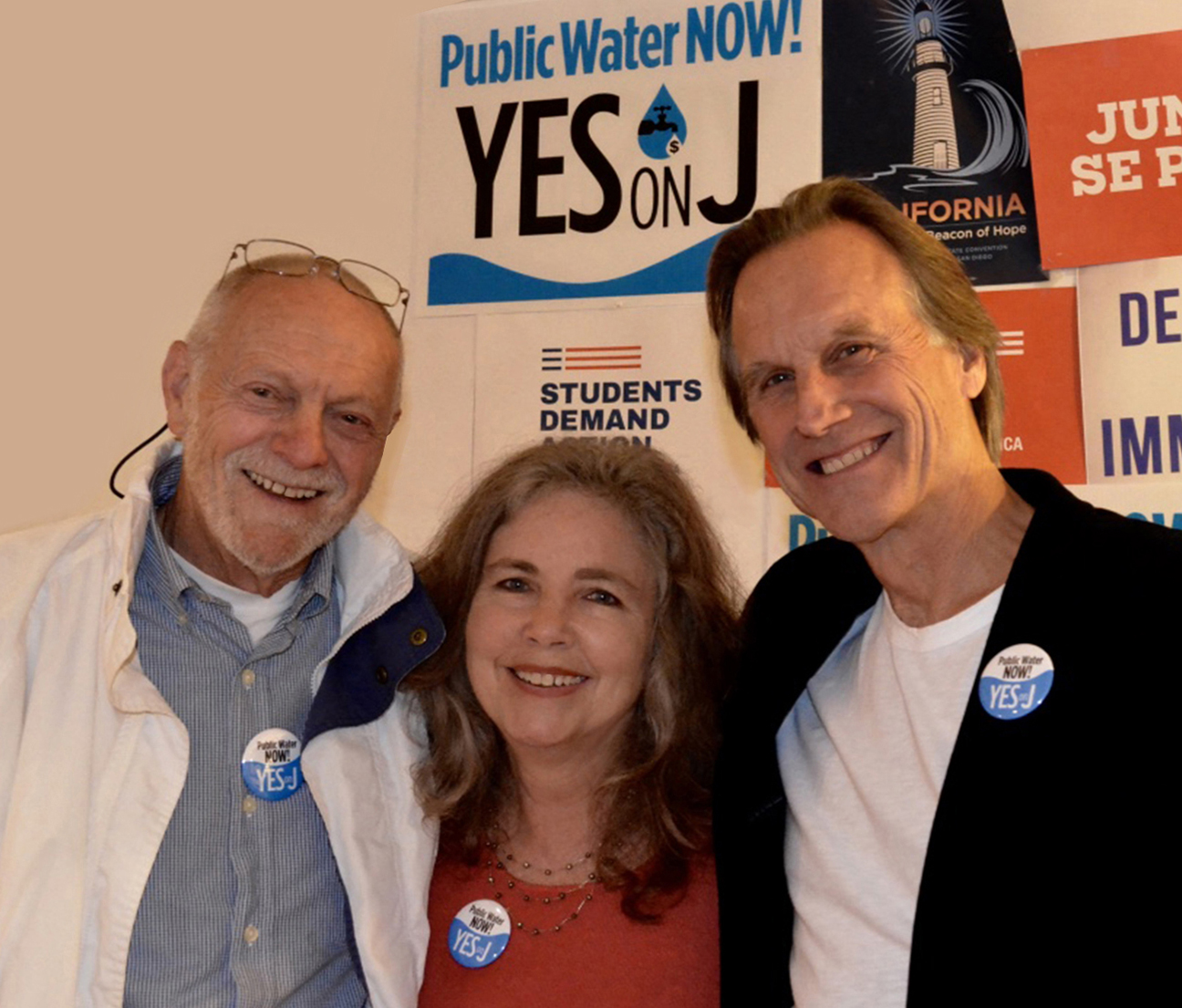Photo: Measure J qualified for the ballot with 11,500 signatures, nearly twice the required number. | Phil Wellman
By Ian Evans
Water is a scarce resource on the Monterey Peninsula, and most of it is controlled and distributed by a private company, California American Water. But on Nov. 6, voters decided to take the first step towards changing that.
They passed a local measure that could ultimately lead the public utility, the Monterey Peninsula Water Management District, to take control of water operations. While proponents of the measure are celebrating their victory, the road ahead for control of the peninsula’s water is long and uncertain.
The measure, known as Measure J, passed 55 percent to 45 percent. It was put forth by the nonprofit Public Water Now, a local nonprofit with about 3,000 supporters. PWN was created in 2013 and concentrates on water issues on the Monterey Peninsula.
This is the third time residents have voted on this issue. There were similar measures in 2005 and one by PWN in 2014. Both failed. This time, though, something was different.
“We were up against an awful lot of money and a very dedicated campaign against us by California American Water,” said George Riley, the managing director and co-founder of PWN. Riley won his own election to the Monterey Peninsula Water Management District’s board of directors.
While Cal Am raised almost $3 million dollars for its “No on Measure J” campaigns, PWN raised only about $160,000 for “Yes on J.” But while Cal Am paid for its campaign almost entirely on its own,“Yes on J” was more grass-roots – mostly financed by individual donations that ranged from $100 to a few thousand dollars (and at least one donation of $20,000).
Part of PWN’s success may have had to do with a report put out last year by the nonprofit Food & Water Watch, which listed the Monterey Peninsula as having the most expensive water in the United States. Riley says that he noticed that people who “were not into water or even into public interest issues would just, in conversation say, ‘I can’t believe that we have the most expensive water in the country. What’s wrong with Cal Am?’ ”
Catherine Stedman, Cal Am’s Central California manager of external affairs, said that the high costs of local water has to do with investments that deal with the lack of local water sources and dealing with “seismic safety issues on San Clemente Dam.”
“As a result, our customers have seen significant increases (in costs),” said Stedman. “Unfortunately, I think that the public was persuaded that voting for Measure J would have an impact on those costs, that there would be a potential to reduce those costs.”
Now, the district has to determine just how much taking over Cal Am’s responsibilities would cost them.

Photo, Bob Coble
What Measure J actually does is order the water district to initiate a feasibility study to determine whether the public water district could take over the responsibility of delivering local water.
Monterey Peninsula Water Management District general manager David Stoldt says that his water district could absolutely take over what Cal Am does now. “Eighty-five percent of all urban water in California is provided by public agencies,” said Stoldt. “It’s not rocket science.”
If the study agrees, then Stoldt says that the MPWMD will call up Cal Am, “and say ‘Hey, we’d like to buy you for this value. The company can negotiate or say, ‘We are not for sale.”
Cal Am recently hired a consultant to calculate its local value. The consultant, MR Valuation Consulting LLC, concluded that Cal Am’s local assets were worth $1.044 billion. In an email, Stoldt said that that number “seems too high.”
Other calculations have placed the value at around $400 million, he said, and the true number is probably somewhere in between.
If the two sides can’t reach an agreement, the process will change from negotiation to takeover. The MPWMD will try to use eminent domain. They’ll need to prove in front of a judge that there is a public benefit to taking over local water operations; benefits like cheaper water or more transparency.
If the process gets that far, Stedman says that Cal Am is confident they would prevail in court. Still, if the judge agrees with the water district, the issue would go before a jury who would finally determine the value of Cal Am’s local waters operations and how much the MPWMD should pay to take it over.
The whole thing could take three to five years.
In that time there may be many smaller fights; over control of the desalination plant that Cal Am is building, over the capacity of the recycling waste water project, Pure Water Monterey, and more. That’s a lot of unknowns and a long time to wait. But Riley has worked on this issue since 2005, and he said he’s okay waiting a little longer.
“I don’t want any shortcuts, this is a big deal,” says Riley. “We’ve got one time to get this right.”
Correction: This story was updated to accurately reflect the goals and the reach of Public Water Now. And earlier version incorrectly asserted that PWN is a national organization.
Have something to say about this story? Send us a letter.